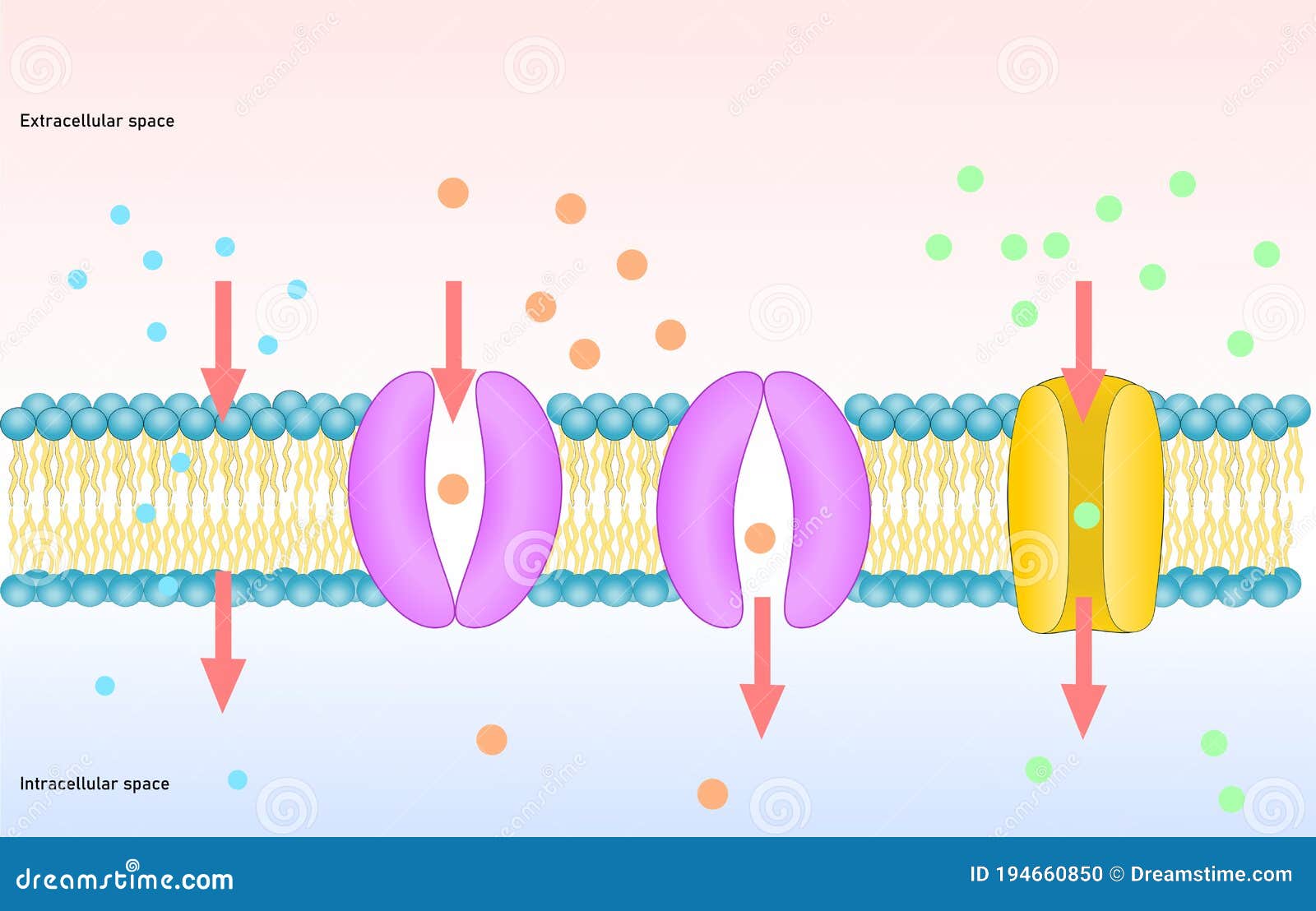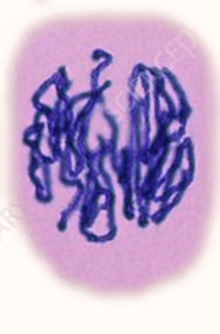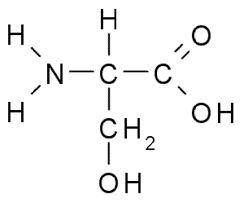The weakest type of chemical bonds of those listed are
a. ionic bonds
b. hydrogen bonds
c. double bonds
d. disulfide bonds
e. covalent bonds
b. hydrogen bonds- are van der waals interactions, they invovle the attraction of atoms of different polarity and can be easily broken.
What organelle is responsible for creating proteins?
Ribosomes
What type of macromolecule is an enzyme?
Protein
What type of cellular transport does the image represent?

Passive transport- The molecules are moving from high to low concentration.
What type of division creates somatic cells?
a. DNA replication
b. Mitosis
c. Meiosis
d. Binary Fission
e. Budding
b. Mitosis- Somatic cells are body cells.
Select the most abundant element of protoplasm from the following choices:
a. calcium
b. phosphorus
c. nitrogen
d. sulfur
e. carbon
e. carbon
A bilayer of phospholipids with protein globules interspered is characteistics of which of the following organelles?
a. Mitochondria
b. Lysosome
c. Chromatin
d. Nucleus
e. cell membrane
e. cell membrane
Which statement is true about enzyme- substrate complex?
a. Enzymes are not used up in a reaction
b. Products are not used up in a reaction
c. Substrates are not used up in a reaction
d. the enzyme-substrate complex is not used up in a reaction
a. Enzymes are not used up in a reaction
When a molecules diffuse down its concentration gradient, it moves from
a. Inside the cell to outside the cell.
b. Outside the cell to inside the cell.
c. An area of low concentration to an area of high concentration.
d. An area of high concentration to an area of low concentration.
e. From one polar end of the cell to another.
c. An area of low concentration to an area of high concentration.
A cell spends most of its life in the
a. G1phase
b. S phase
c. G2 phase
d. M phase
e. C phase
a. G1phase- G1, S and G2 are part of inhterphase. G1- is the phase that the cell performs its normal function.
S- DNA is replicated
G2- Cell organelles are replicated, cell grows and prepares for mitosis.
Which DNA is more stable, less likely to destabilize? Explain why/
DNA Sample 1
G C A T C A A T C T T A A T C T A T C A T
C G T A G T T A G A A T T A G A T A G T A
DNA Sample 2
A T C T T C A G G C G C A T C G A G C T A
T A G A A G T C C G C G T A G C T C G A T
DNA Sample 2, it contains more C and G nucleotides which are held together by three hydrogen bonds, while A and T are only held together by two hydrogen bonds.
Which of the following statemetns about cells is NOT true?
a. All living things are made up of one or more ce
b. All cells come from pre-existing cells.
c. All cells have cell walls.
d. Cells may be seen with a microscope.
e. Cells are the basic unit of life
c. All cells have cell walls.- Animal cells do not have a cell wall.

Which of the following best describes the relationship between an enzyme and substrate(s) in the induced-fit model?
a. plug-in-an-outlet
b. hand-in-a-glove
c. key-in-a-lock
d. ball-in-a-socket
b. hand-in-a-glove
In the induced fit model, the enzyme repsonds to the substarte by molding itself aroudn the substrate
Key-in-lock model, the enzyme has a specific shape that binds with the substrate.
The movement of liquids through vesicles in the cell membrane is
a. Simple diffusion
b. Sodium/Potassium Pump
c. Phagocytosis
d. Pinocytosis
e. Osmosis
d. Pinocytosis
What phase of mitosis does the image represent?

Prophase
Which macromolecule does the image depict?

Protein- it contains Carbon, Hydrogen, Oxygen and Nitrogen.
What type of organism does the image represent?

a. Plant
b. Animal
c. Fungi
d. Bacteria
e. Protist
c. Fungi- the cell wall contains chitin
Plants have cell walls composed of cellulose
Bacteria have cell walls composed of peptidoglycan.
Human enzymes work best at which temperature and pH range?
a. 25 C and pH 6-8
b. 25 C and 4-6
c. 37 C and 6-8
d. 37 C adn 4-6
e. 37C and pH 8-10
c. 37 C and 6-8
Normal temperature for the human body is 37C or 98.6F and pH range near neutral (7).
Aldosterone (a steroid hormone) is a small, nonpolar, hydrophobic molecule that enters a target cell by moving across the plasma membrane, down a concentration gradient.Based on the information presented, how does aldosterone most likely enter target cells?
a. By simple diffusion because aldosterone can enter a cell by moving across the plasma membrane and moving down the concentration gradient.
b.By facilitated diffusion because aldosterone would need the assistance of a protein channel to move across the plasma membrane.
c. By active transport because aldosterone would need energy to move across the plasma membrane.
d. By endocytosis because aldosterone would need to be transported by bulk transportation into the cell.
e. By exocytosis because aldosterone would need to be transported by bulk transportation out of the cell.
a. By simple diffusion because aldosterone can enter a cell by moving across the plasma membrane and moving down the concentration gradient.
Several genes are responsible for preventing cells from dividing when conditions are not right. Two examples are tumor suppressor genes and proto-oncogenes.Which of the following accurately compares tumor suppressor genes and proto-oncogenes?
a. Both tumor suppressor and proto-oncogenes prevent the spread of cancer by targeting and destroying existing cancer cells.
b. A person who has both tumor suppressor and proto-oncogenes will always develop cancer.
c. Proto-oncogenes code for growth factors, while tumor suppressor genes inhibit cell division of damaged cells.
d. When a proto-oncogene mutates, it becomes a tumor suppressor gene.
e. Proto-oncogenes code for apoptosis, while tumor suppressor genes promote the growth of cells.
c. Proto-oncogenes code for growth factors, while tumore suppressor genes inhibit cell division of damaged cells.
All the statements about the following reaction are true EXCEPT:

a. It is an exothermic reaction
b. It is a combination reaction
c. It is an endothermic reaction
d. This reaction occurs within animals in order to store energy
e. Water is a by-product
a. It is an exothermic reaction- The reaction creates a lipid which stores energy (endothermic)
Wolman disease affects lysosomal function and results in the accumulation of lipids in the liver, spleen, intestines, adrenal glands, and lymph nodes. Which of the following best explains why excess lipids accumulate in individuals with Wolman disease?
a. The lysosome prevents lipids from entering the cell through endocytosis.
b.The lysosomes contain an insufficient amount of lipid-digesting enzymes.
c.The lysosomes accumulate extra lipid-digesting enzymes.
d.The lysosomes allow excess lipids to enter the cell through endocytosis.
b.The lysosomes contain an insufficient amount of lipid-digesting enzymes.
If a molecule changes the shape of the active site in such a way that the substrate can no longer bind to its substrate, the function is inhibited. This kind of molecule is called
a. coenzyme
b. competitive inhibitor
c. activator
d. allosteric inhibitor
e. catalyst
d. allosteric inhibitor - binds to a site other than the binding site, but he bind changes the shape of the active site.
The above image shows three different plant cells and the different movement of water in each. Which of the following answer choices are true? Choose 2 answers.
a. There is a higher concentration of water on the outside of plant cell C than on the inside
b. Plant cell B is within a hypotonic solution because water is entering the cell.
b. There is a lower concentration of water on the outside of plant cell B than on the inside.
c. Plant cell A is within a hypertonic solution because water is leaving the cell.
e. Plant cell C is within an isotonic solution, because water is entering and leaving the cell at an equal rate.
a. There is a higher concentration of water on the outside of plant cell C than on the inside
d. Plant cell A is within a hypertonic solution because water is leaving the cell.
What is the role of CDk and M cyclin?
a. Promote S phase events, such as activation of DNA replication enzymes.
b. Stop the cell cycle if DNA damage is detected.
c. Allow sister chromatid separation and destory M phase cyclins.
d. Promote M phase events, such as nuclear envelope breakdown.
d. Promote M phase events, such as nuclear envelope breakdown.